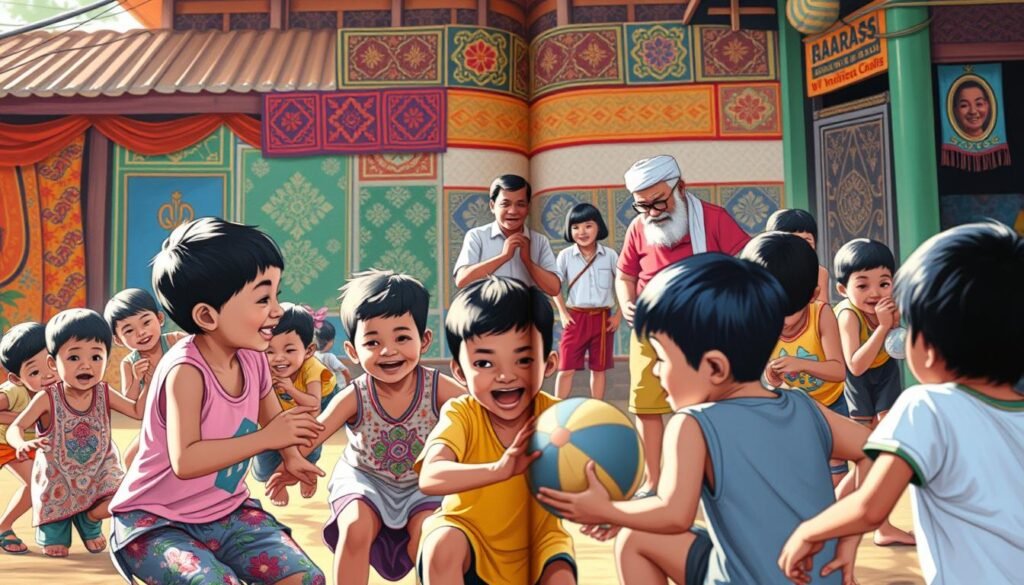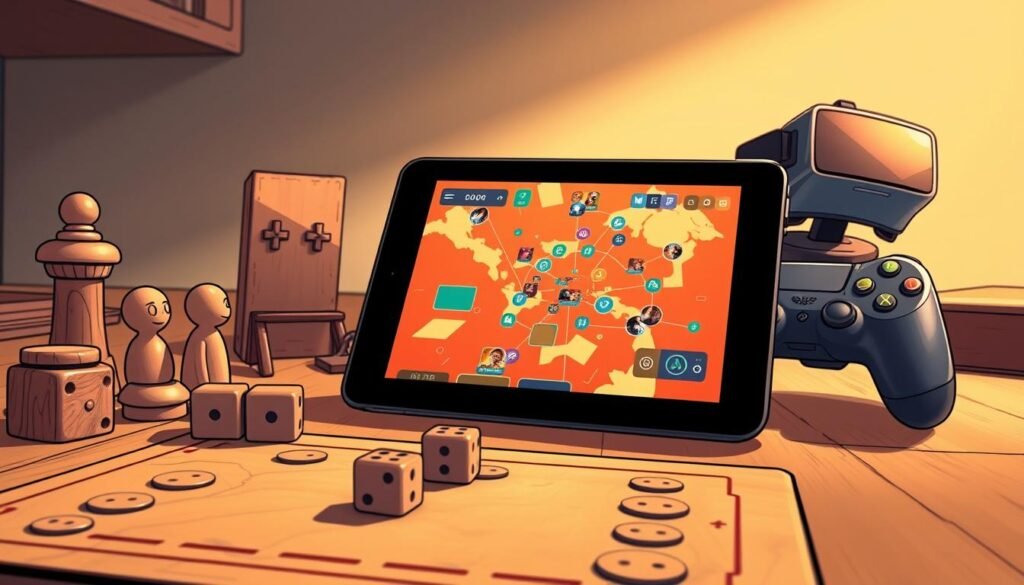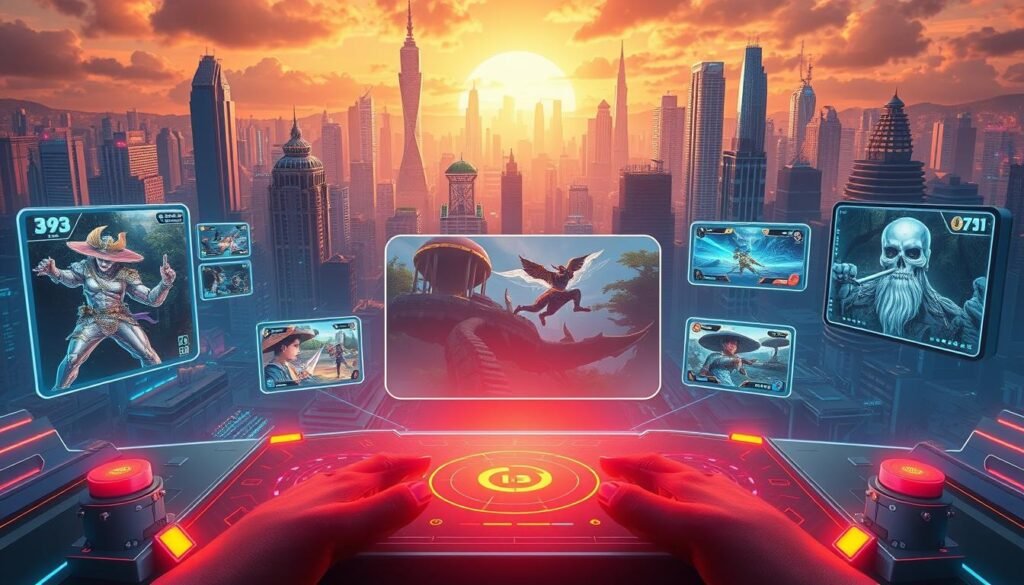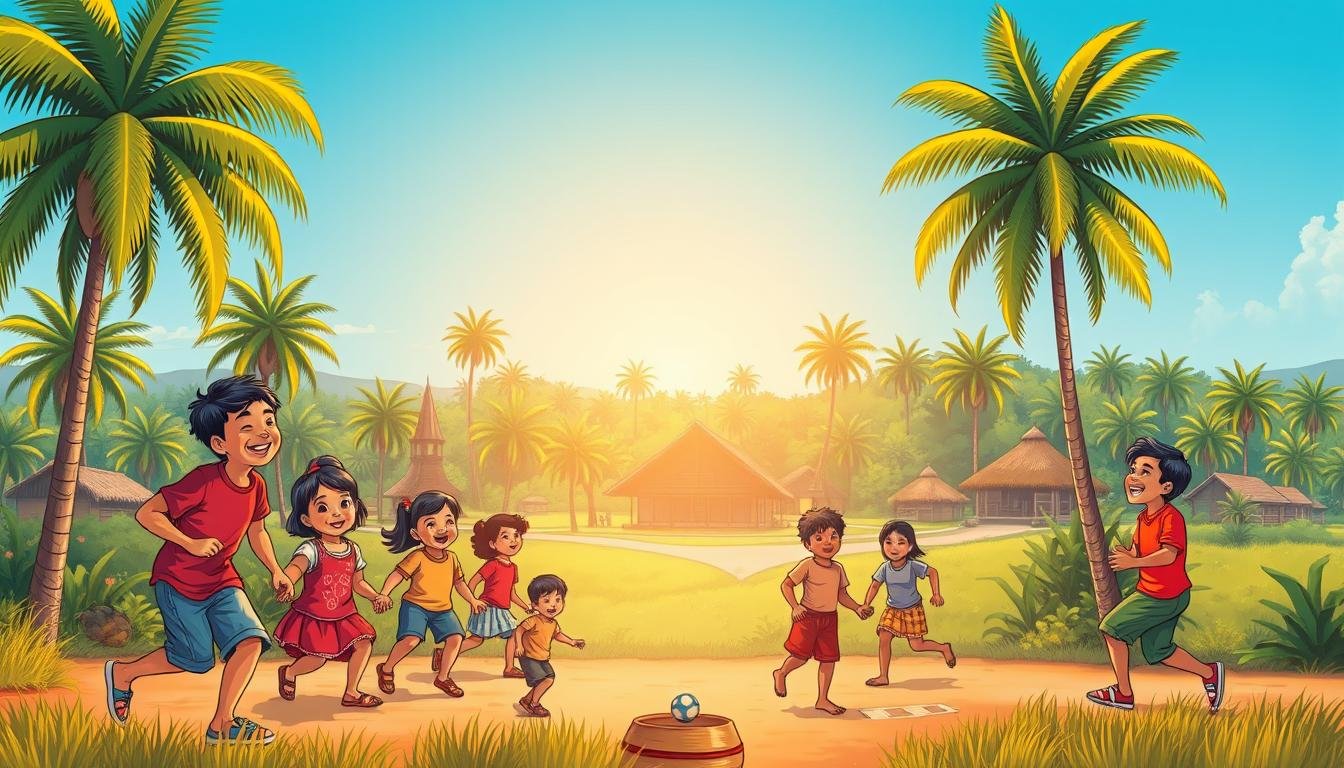Did you know that the Philippines, with its 7,641 islands, is home to 175 ethnolinguistic groups? This cultural diversity laid the foundation for a vibrant array of traditional games and recreational activities long before colonial influences arrived. These activities were more than just pastimes—they were deeply rooted in the indigenous spirit and communal life of the Filipino people.
From physical contests to strategic board games, pre-colonial games served as a focal point for celebrations and social bonding. They were a natural part of daily life, blending play with cultural rituals and traditions. These activities not only entertained but also strengthened community ties and preserved cultural identity.
Today, the legacy of these games continues to inspire modern recreation, including the transition to digital experiences on the web. Preserving this heritage is essential, as it connects us to the rich history and values of the Filipino people.
Key Takeaways
- Pre-colonial games were deeply tied to Filipino cultural identity.
- These activities fostered social cohesion and community bonding.
- Traditional games evolved from physical contests to complex rituals.
- They laid the groundwork for modern recreational practices.
- Preserving this heritage is vital for cultural continuity.
Historical Overview of Pre-Colonial Philippine Recreation
The roots of Filipino recreation trace back to a time of rich cultural traditions. Long before modern influences, indigenous communities developed activities that were deeply tied to their way of life. These pastimes were not just for fun—they were a reflection of values, beliefs, and social structures.

Origins of Traditional Filipino Games
Traditional Filipino games emerged from the daily lives of early communities. Activities like sipa, a game involving a rattan ball, and Bagbagto, a stone-throwing contest, were born out of necessity and creativity. These games were often played during festivals, weddings, and other social gatherings, blending play with cultural rituals.
Early developers of these games crafted them to reflect indigenous values. For example, Arnis, a combative sport, was designed for self-defense and discipline. Such activities were more than entertainment—they were tools for teaching life skills and preserving heritage.
Role of Games in Community and Social Celebrations
Games played a central role in strengthening community bonds. They were a way for people to connect, compete, and celebrate together. Events like fiestas often featured games like sipa, where participants focused on enjoyment rather than victory.
These activities also shaped social structures. They encouraged teamwork, respect, and fair play, values that remain relevant today. In many ways, these early forms of recreation laid the groundwork for modern social gaming concepts found on online platforms.
From the new beginnings of structured play to their influence across the world, traditional Filipino games continue to inspire. They remind us of the importance of preserving cultural heritage while embracing innovation.
Cultural Significance and Legacy of Traditional Games
Traditional Filipino pastimes are more than just play—they are windows into a rich cultural heritage. These activities were deeply intertwined with indigenous practices and rituals, serving as a medium to impart cultural narratives and values. Each game carried symbolism, reflecting the beliefs and traditions of early Filipino communities.

For example, Sungka, a strategic board game, was not just about winning but about teaching patience and critical thinking. Similarly, Patintero emphasized teamwork and communication, fostering social bonds. These games were often played during festivals and gatherings, connecting generations and preserving cultural identity.
Indigenous Practices and Rituals
Indigenous rituals surrounded these activities, adding layers of meaning. Games like Arnis were rooted in self-defense and discipline, while Sipa showcased agility and coordination. These practices were more than entertainment—they were tools for teaching life skills and preserving heritage.
“Every game tells a story, and every story connects us to our roots.”
Preservation of Cultural Heritage
Preserving these traditions is vital for cultural continuity. Community-driven efforts, led by local custodians, have kept these practices alive. Modern initiatives, such as integrating traditional games into educational programs, are new ways to reinvigorate interest in these timeless pastimes.
Digital platforms also play a role in spreading awareness, making these games accessible to a wider audience. By blending tradition with innovation, we ensure that the legacy of Filipino culture continues to thrive.
Games: Evolution from Traditional Pastimes to Modern Platforms
From village gatherings to global online arenas, the essence of play has transformed dramatically. What began as simple physical activities has now evolved into complex digital experiences. This shift reflects the adaptability of human creativity and the impact of technology on recreation.

Transition from Physical to Digital Play
Traditional pastimes like sipa and Patintero were once played in open fields, fostering community bonds. Today, these activities have found new life on digital platforms. Platforms like CrazyGames offer over 4,500 instant-play options, bringing the joy of play to desktops and mobile devices.
Game developers have played a crucial role in this transition. By converting historic community play into engaging online experiences, they’ve preserved the essence of traditional games while making them accessible to a global audience. This evolution highlights the seamless blend of tradition and innovation.
Influence on Contemporary Gaming Culture
The influence of traditional games is evident in modern online play. Elements like teamwork and strategy, once central to village games, are now key features in digital competitions. Companies like Riot Games have taken this further, organizing leading esports events that attract millions of players worldwide.
Modern technology has enabled teams and individual players to engage in competitive play on a global scale. This progression from simple community events to organized digital competitions underscores the cultural impact of integrating centuries-old traditions into today’s online platforms.
“The digital age has not replaced tradition—it has reimagined it for a new generation.”
For more insights on how games have evolved, explore this detailed analysis.
Harnessing Digital Platforms for a Contemporary Experience
The digital age has redefined how we connect, compete, and create, transforming traditional play into immersive online experiences. Today, platforms like CrazyGames and Poki are leading the charge, offering instant access to thousands of free games without the need for downloads. This shift has made play more accessible and engaging for millions of users worldwide.

Insights from CrazyGames and Poki on Online Entertainment
CrazyGames boasts a library of over 4,500 free online games, attracting 30 million monthly users. Its seamless design ensures a smooth experience across devices, making it a go-to platform for casual and competitive players alike. Similarly, Poki offers over 1,000 game titles, focusing on distraction-free play that caters to a global audience.
These platforms prioritize user-friendly interfaces and curated content, ensuring that every player finds something they enjoy. By eliminating intrusive downloads, they’ve set a new standard for best free online entertainment.
Global Trends from Riot Games and the Esports World
Riot Games has revolutionized the gaming world with titles like League of Legends and VALORANT. Their focus on competitive play has turned esports into a global phenomenon, attracting millions of players and spectators. The rise of organized tournaments and professional teams highlights the growing influence of digital platforms in shaping modern play.
Esports has also fostered a sense of community, where friends and teams come together to compete and celebrate. This evolution mirrors the communal spirit of traditional pastimes, proving that the essence of play remains unchanged, even in a digital world.
“The digital age has not replaced tradition—it has reimagined it for a new generation.”
| Platform | Key Features | Impact |
|---|---|---|
| CrazyGames | 4,500+ games, 30M users | Accessible, no downloads |
| Poki | 1,000+ games, instant play | Distraction-free experience |
| Riot Games | Esports, global tournaments | Community and competition |
For more insights on how digital platforms are shaping the future of play, explore this detailed analysis.
Conclusion
The journey through the history of Filipino recreation reveals a fascinating blend of tradition and innovation. From the physical contests of pre-colonial times to the best free online experiences today, the essence of play has evolved while preserving cultural roots.
These activities were more than just pastimes—they were a reflection of community, teamwork, and individual passion. Modern developers have skillfully bridged these historical traditions with innovative digital platforms, ensuring that the legacy of Filipino culture continues to thrive.
Preserving these traditions is vital. They remind us of the importance of cultural heritage in a rapidly changing world. By exploring and appreciating these rich practices, we honor the past while embracing the future.
For more insights into the Philippines’ cultural heritage, visit our dedicated page.
FAQ
What were the origins of traditional Filipino games?
Traditional Filipino games trace their roots to pre-colonial times, reflecting the daily lives, rituals, and social structures of indigenous communities. These activities were often tied to nature, survival skills, and communal bonding.
How did games play a role in community and social celebrations?
Games were central to festivals, gatherings, and rites of passage, fostering unity and camaraderie. They served as both entertainment and a way to teach values, teamwork, and cultural traditions.
What is the cultural significance of indigenous practices and rituals in traditional games?
Indigenous practices embedded in these games highlight spiritual beliefs, storytelling, and the connection to nature. They preserve ancestral wisdom and offer a glimpse into the Philippines’ rich cultural heritage.
How are traditional Filipino games being preserved today?
Efforts include educational programs, cultural festivals, and digital adaptations. Organizations and communities work to ensure these games remain relevant for future generations.
How have traditional games evolved into modern platforms?
Traditional games have transitioned from physical play to digital formats, influenced by platforms like CrazyGames and Poki. This shift has introduced them to a global audience while retaining their cultural essence.
What impact have Riot Games and the esports world had on contemporary gaming culture?
Riot Games and esports have revolutionized gaming by emphasizing competition, teamwork, and global connectivity. They’ve also inspired the integration of traditional elements into modern gaming experiences.
How are digital platforms enhancing the experience of traditional games?
Digital platforms like CrazyGames and Poki provide accessible, interactive, and engaging ways to experience traditional games. They blend nostalgia with modern technology, appealing to diverse audiences worldwide.
Source Links
- Culture of the Philippines
- Latest Sport Trends and News in the Philippines
- Physical Activities in the Philippines During the Pre-Spanish Period.
- Philippines – Sports, Recreation, Culture | Britannica
- The Impact and Magic of Traditional Games on Children
- Traditional Filipino Games: Sungka, Patintero, Sipa – Keeping Culture Alive – Pinas Culture
- Frontiers | Traditional Games as Cultural Heritage: The Case of Canary Islands (Spain) From an Ethnomotor Perspective
- History of games
- Retro Games Vs. Modern Games: Explore The Gaming Evolution
- Evolution of Video Games: From Niche to Mainstream – THINK Magazine
- Sports marketing trends and best practices: Reaching fans in a digital age
- Redefining Play: Trends and Transformations in Video Games
- Platformisation in game development
- Conclusions
- Interactive Storytelling – Narrative Techniques and Methods in Video Games: Conclusion

